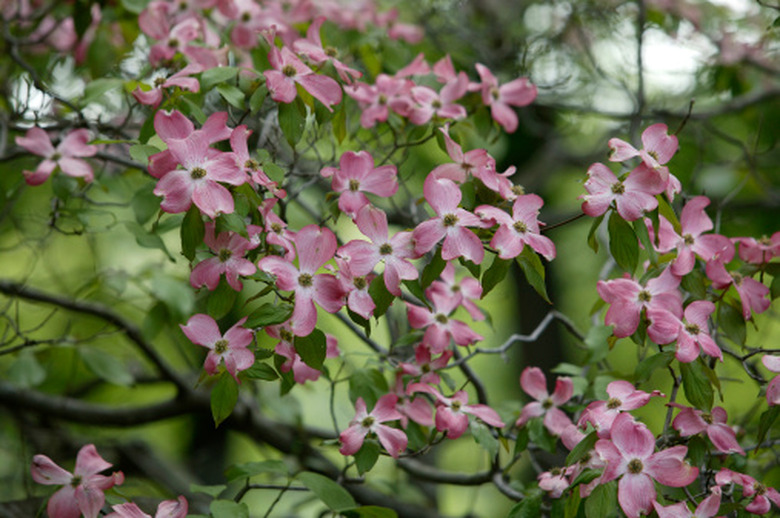Native Flowering Trees In North Carolina
North Carolina has many native flowering trees growing in its forests and other areas throughout its diverse regions. The Western North Carolina Nature Center lists dozens of native flowering trees that grow in the state. Native trees are those that occur naturally in the state and have adapted and evolved to fit the environmental characteristics of the region in which they grow.
Flowering Dogwood
The flowering dogwood, or Cornus florida, is the state flower of North Carolina and is one of the state's most common flowering trees, according to Will Cook at Duke University. The white bracts surround the small, yellowish-green flowers, which grow from four-section buds. The leaves are heavily veined and the tree's red fruit ripens in September and lasts through winter. The bark on mature trees has a broken, squared pattern. The leaves turn a deep purple-red color in fall.
Fringe Tree
The fringe tree, or Chionanthus virginicus, is also known as "old man's beard" for the way its flowers grow. The fringe tree is classified as a shrub and tree, and it grows to about 20 feet. The blooms are masses of white, spiky flowers that grow downward like a beard. The tree blooms in midspring and requires full or partial sun. The fringe tree has its most impressive display of blooms in mid-April to May. The fringe tree is the only tree in the North Carolina that is native, deciduous and has large, opposite leaves, according to the North Carolina Native Plant Society.
Common Persimmon
The common persimmon tree, or Dyospyros virginiana, has small, bell-shaped flowers, according to the Will Cook site at Duke University. The fruit of the common persimmon is edible and sweet when fully ripe. The tree bark appears to be broken into blackened squares. The tree's small branches are hairy and the buds appear blackened.
Eastern Redbud
The eastern redbud, or Circis canadensis, has large, heart-shaped, alternate leaves, according to Virginia Tech. The eastern redbud is classified as a shrub or a tree, depending on its size. Trees grow to 30 feet tall and often have short, twisted trunks. The tree's flowers appear in showy clusters of pink to light-purple, pea-like blooms. Flower clusters often grow from the trunk. The trunks of eastern redbuds are often forked. The tree's fruit is a flat, brown legume that contains seeds.
